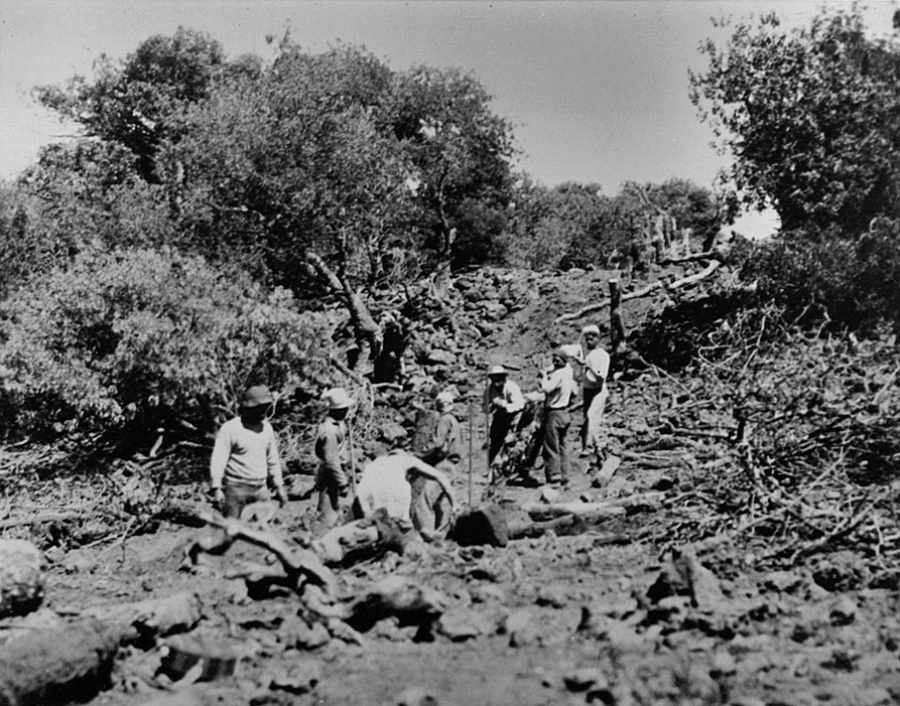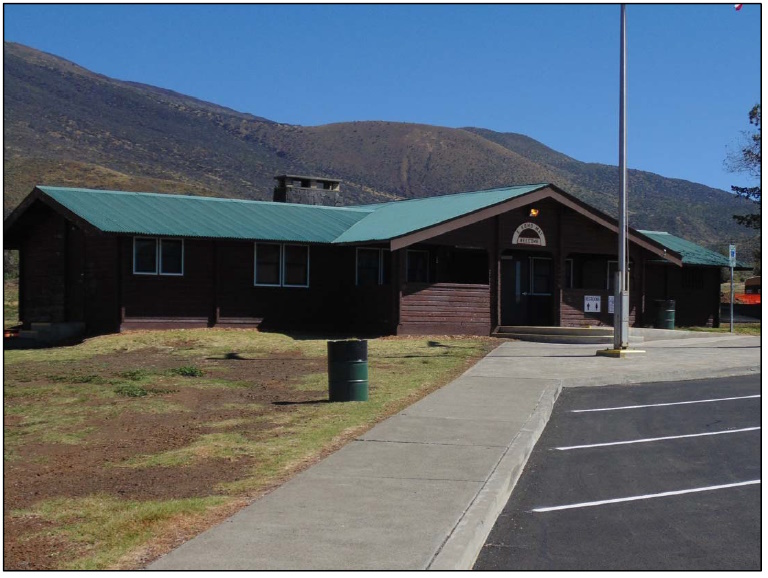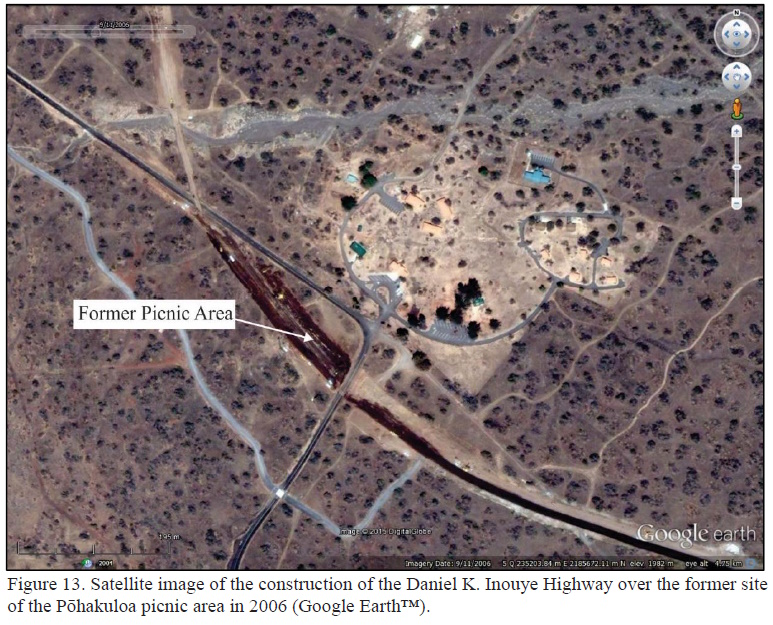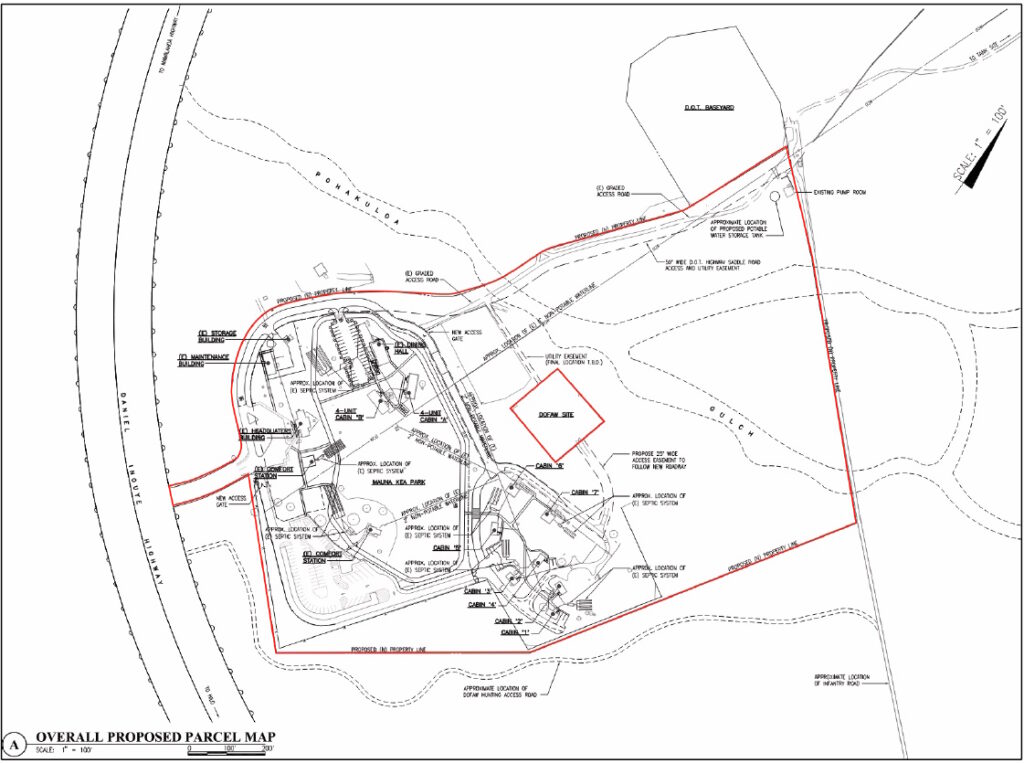“Captain George Vancouver brought the first cattle to Hawaii from California in 1793-1794. They were landed and liberated at Kealakekua, South Kona on the Big Island. As with other introduced animals of the same period, a rigid “kapu” was placed on them in order to permit them to multiply.”
“This they did with a vengeance and within a comparatively short span of years they became quite common on all the islands, particularly on Hawaii where they found many hundreds of acres of good pasture lands.”
“Over a period of many years they were slaughtered by men employed for this purpose by the King, principally for their hides, which at one time formed one of the principal articles of export from Hawaii.”
“Experts were employed by the King to go into the mountains to shoot and rope these animals. Only a small amount of the meat was used, some of it being salted and sold to the whaling ships wintered in these water at that time.”
“Many of them were trapped in “pitfalls” similar to the one which David Douglass lost his life on the slopes of Mauna Kea in 1834.” (Bryan, “Wild Cattle in Hawaii” Paradise of the Pacific (1937))
“For the past twenty years the attention of our Government and of this Forestry Bureau has been called to the destruction of our Native forests on Government lands in particular. … It is become a serious problem with us.”
“Large areas of Public Forests are annually destroyed by fire, orginating [sic] in many instances by cattlemen setting fire to the ferns and underbrush to improve their pasture. … If the cattle are not taken away soon it will be but a short time when this Native forest will be destroyed, and the water supply on the low land diminished.”
“‘[C]attle seem to be the principal enemy of the forests.’ [Sheep also damage the forest habitat] .By way of countering this threat, [it was] recommended that large parts of the government forest lands …”
“… ‘should be fenced off at once, for the purpose of preserving the living and growing timber and promoting the younger growth of fern and underbrush.’” (Report of the Minister of Interior to the President of the Republic of Hawaii for the Biennium, Ending December 31, 1899; LRB, 1965)
Then came “The Big Fence on the Big Island” … The Territorial Division of Forestry intensified efforts to eradicate feral sheep from the Mauna Kea Forest Reserve in the 1930s after noticing a lack of natural regeneration and damage to māmane trees caused by sheep.
With the help of the Civilian Conservation Corps (CCC), territorial foresters built a 55-mile fence around Mauna Kea in 20 months. It was 4.5-foot tall galvanized stock wire stretched between large māmane posts. (DLNR)
“On the 29th of January, 1937, the longest fence in the Territory of Hawaii was completed by CCC boys. It is around the entire boundary of the Mauna Kea Forest Reserve – the second largest reserve in the Hawaiian Islands.”
“This project, which is part of the Territorial Division of Forestry’s conservation program, was done under the direction of Project Superintendent W.A. Hartman. … Much credit is due … to the enrollees who worked under them, for the fine accomplishment.”
“Actual construction work was started in June of 1935. A total of twenty months was required to complete the work on the fence which has a total length, including necessary corrals, of fifty-five and one-half miles. Eighteen thousand five hundred and thirty-six man-days were expended on all work connection with this project.”
“A great deal of preliminary work was required before the actual construction of the fence began. First, it was necessary to build many miles of horse and truck trails and tractor roads.”
“In connection with the fence line alone nearly sixty miles of horse-trails were constructed. This trail was used to pack in the fence wire and other supplies. It was made permanent for future use in fence patrol and wild animal eradication work.”
“Most of the fence work was above the eight thousand foot contour. Camp locations had to be selected, shelters constructed, and water tanks installed. These camps were located as close to the fence lines as possible and placed at intervals around the mountain approximately four miles apart.”
“This made the maximum distance from camp to work about two miles each way. At each camp site it was necessary to construct a corral for the work animals. Practically all feed, and part of the water, for these animals, had to be transported to the camp site.”
“Nine line camps were used. Seven of them had to be constructed in advance. These camps were made on the same plan; one small building with watertanks alongside in which could be stored between six and eight thousand gallons of water. The building was used as a cook-house and store-room. The boys lived in tents.”
“During the winter months it becomes quite cold on Mauna Kea and it was found that seven blankets per boy was not too much cover.”
“Frequently the thermometer registered below freezing and at the Puu Loa Camp last February it was necessary to stop work for three days due to an exceptionally heavy fall of snow which covered the ground in that section and prevented work on the fence line.”
“The completion of this fence concludes one of the most important conservation projects attempted by the CCC in the Territory of Hawaii. It completely encloses and protects a reserve area containing approximately one hundred thousand acres. “
“The important Wailuku River – which furnishes the water-supply for the City of Hilo – as well as several other large streams that supply water to Hilo and Hamakua Districts, have their source within this area.”
“This reserve has, for many years, been overrun with wild sheep, there being an estimated population of about forty thousand. These animals do much damage and of recent years have effectively prevented any natural reproduction of the predominating tree growth – Mamani.”
“With this new fence completed it is now possible to conduct drives and reduce the number of these animals to a minimum. In a recent drive, held since the fence was completed, over three thousand wild sheep were captured and killed in a single day.”
“After these animals are exterminated we can expect considerable assistance from nature in our reforestation work. On a small scale this fact has already been demonstrated so we fell assured of ultimate success.”
“In some sections, where seed trees are lacking, it will be necessary to assist nature with reforestation; but where seed trees have been left we can expect to see a new generation of plants occur naturally.” (Bryan, “The Big Fence on the Big Island” Paradise of the Pacific (1937)
The completed fence enabled territorial foresters on horseback to drive sheep and herd them into pens. In one drive near Kemole, they captured and killed over 3,000 sheep in a day.
Territorial foresters removed nearly 47,000 sheep and 2,200 other non-native browsing animals from Mauna Kea during the 1930s and 1940s. It is likely that the Palila would not be here today if not for these efforts due to the highly degraded condition of the forest at the time. (DLNR)











































































